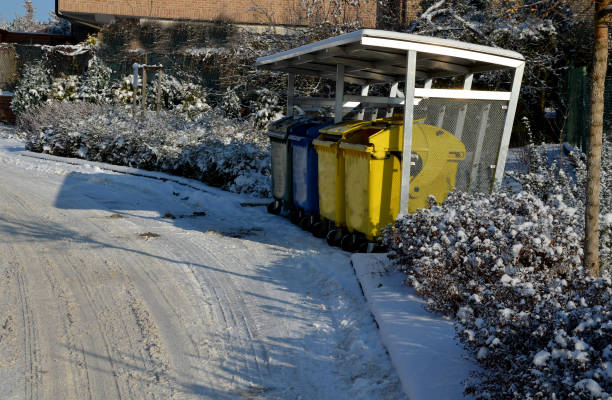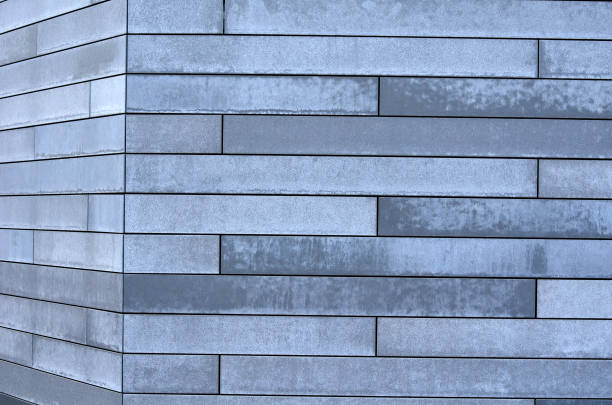The government has expanded an inquiry into the use of Reinforced Autoclaved Aerated Concrete (RAAC) to include the whole public estate rather than just schools as it was initially planned in March last year. Confirmed in a Local Government Association (LGA) briefing, the inquiry will now ask each government department look to identify and rectify the use of RAAC in buildings they own. RAAC is a lightweight form of concrete. It has no coarse aggregate and is made in factories using fine aggregate, chemicals to create gas bubbles and heat to cure the compound. It is technology taken from other industrial processes that speeds up the manufacturing turnaround of precast concrete units and was used in schools and hospitals between the 1960s and 1990s. However, there is a high volume of air within RAAC, making it vulnerable to moisture ingress and it is now known to lose tensile strength in situ. As these buildings are now surpassing their 30-year lifespans, recent years have seen structural failures occurring as commonplace. A sudden roof collapse at a primary school in Essex in 2018 brought the RAAC issue to light and now a total of 20 hospitals at 18 different NHS trusts around the UK have been identified as suffering from the blight. It has seen the NHS implement emergency supports and monitoring systems on seven badly affected hospitals around the country that have been built with RAAC. NCE has reported on the issue a number of times. In 2021 NCE suggested that the issue with RAAC could be as problematic as that found with use of High Alumina Cement in the 1970s. In July last year NCE reported that Mott MacDonald was undertaking a review of the RAAC risk to hospitals and in February this year it was reported that Edinburgh Council was examining 15 buildings over RAAC concerns. A series of Foils sent out by NCE revealed that the hospitals worst affected by RAAC will need hundreds of millions of pounds for remedial works. With the recent inquiry announcement, the Office of Government Property (OGP) will convene a working group formed of a designated representative from each government department responsible for RAAC identification and remediation. The OGP released a safety briefing notice to all property leaders in September of last year, stating that “RAAC is now life-expired and liable to collapse”.

The Standing Committee on Structural Safety.
had previously noted: “Although called ‘concrete’, RAAC is very different from traditional concrete and, because of the way in which it was made, much weaker.” The LGA said: “RAAC is a lightweight form of precast concrete, frequently used in public sector buildings in the UK from the mid-1960s to at least the mid-1980s. “It is mainly found in roofs, although occasionally in floors and walls. It is less durable than traditional concrete and there have been problems as a result, which could have significant safety consequences. “It is important that those responsible for the management, maintenance or alteration of central and local government buildings know whether their buildings contain RAAC and, where they do, they act appropriately to ensure that such buildings are deemed safe. “Action is already being taken by OGP to set standards in this area to support organizations to meet their operational responsibility in addressing the risks of RAAC. The health and education sectors have identified a number of buildings with this issue and are currently working on appropriate remedial actions.” Typically, RAAC panels are hidden behind finishes, such as suspended ceilings or plasterboard, and therefore can be difficult to identify without intrusive work. The panels are usually between 450mm to 600mm wide and 2.4m to 3m long, although the Department for Education (DfES) stated panels were available up to 6m in length. They typically have a slight chamfer to each edge and can vary in color from white to pale grey. In a roof, DfES guidance states the easiest way to identify RAAC panels is to look at the underside. Among the issues related to RAAC include the panels having low compressive strength, which is around 10-20% of traditional concrete. This results in the shear and bending strength being highly reduced and further impacted by water saturation. RAAC is also very porous and highly permeable. This means that the steel reinforcement within the panels is less well protected against corrosion than steel reinforcement in traditional concrete, according to the Def.. Structural safety body Cross released a report in 2020 which included reporting from an unnamed local authority regarding instances of RAAC being used within its property.

The Report Stated The Local Authority Had Some.
issues suggesting defects in the RAAC planks coupled with severe weather conditions gave rise to the mechanism of long-term creep. Creep is where a solid material suffers from slow deformation while subject to persistent mechanical stresses. The report continued to state that these factors combined with panel defects, including the longitudinal reinforced steel bar being of an inadequate length, very high depth ratio and a poor aggregate mix, resulted in the shearing of the planks and subsequent collapse. For the past year, the Def. has been urging schools to check for RAAC and complete a questionnaire related to any findings on their property. Last week, Schools Week reported that government officials had set up a call center to chase schools that hadn’t responded to the survey. The LGA continued: “Although intended for educational buildings, this advice is generally relevant to all buildings. “When the presence of RAAC is confirmed, a structural assessment should be carried out. “Assessment of RAAC is a highly specialized area within the structural engineering profession, and it is important to ensure that those providing structural engineering services are suitably qualified and can demonstrate an appropriate level of skill and experience.”


Recent Comments